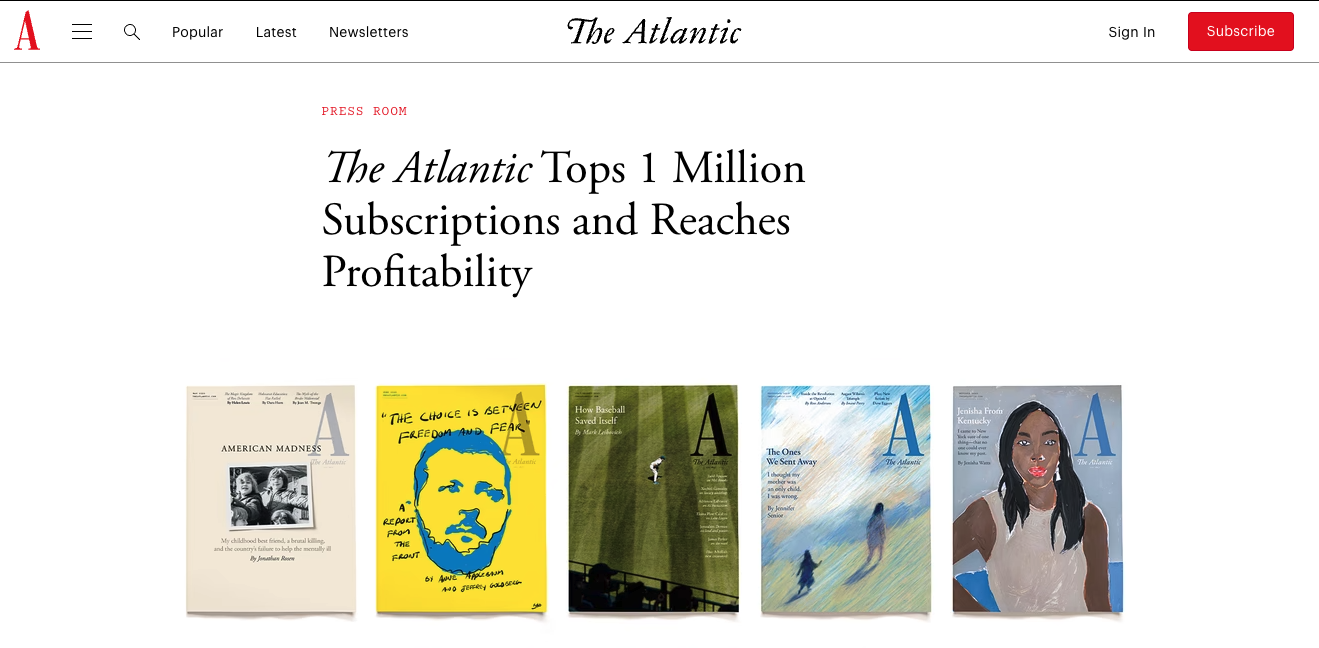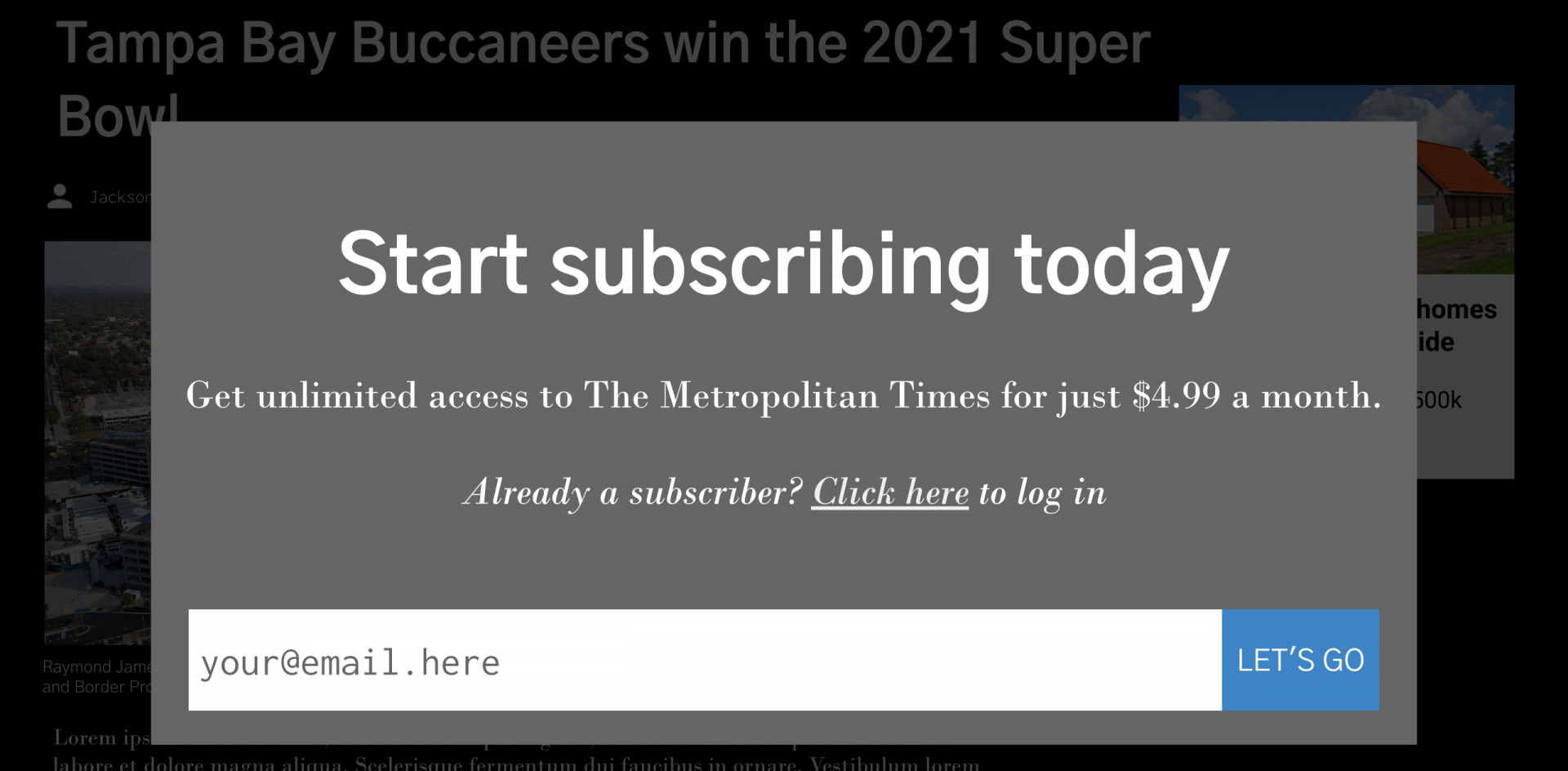
Newsletter
Newsletter
Find out the ways that the Daily Beast is converting unknown users to known users and maximising the revenue from the ‘great middle’ of their audience.
5th April 2023

In the Pugpig weekly media bulletin, Pugpig’s consulting services director Kevin Anderson and digital growth consultant James Kember distill some of the best strategies and tactics that are driving growth in audiences, revenue and innovation at media businesses around the world.
The Daily Beast is not alone in realising that it was never going to get all of its digital readers signed up as paying subscribers so they have developing ways to maximise the value that they capture from readers “across all revenue streams”, Digiday recently reported. Katie Pillich, the senior vice president of revenue operations, told the Digiday Publishing Summit that the Daily Beast reorganised to better coordinate and align the activities across revenue teams.
Sign up to get the Media Bulletin in your inbox.
As publishers have built out their reader revenue strategies, they have been able to put a figure on how much more valuable a paying subscriber is to them, and in the case of the Daily Beast, a paying subscriber is 18 times more valuable than an unknown users. However, apart from the fact that they won’t convert all of their unknown or known users to subscribers, Pillich and her teams also know that there is still revenue to be captured from other audiences.
They have created “known user” cohorts and attached unique identifiers to them so that they can track how they interact with content and determine the best way to monetise this “great middle” of readers.
Similar to publishers like The Independent and its A2K – anonymous to known – strategy, the Daily Beast is making heavy use of registration walls to move users from unknown to known. They also want to convert these user cohorts to certain products such as a vertically-specific newsletter or their app. By segmenting their audience this way, they can calculate the value of the user now plus what the potential lifetime value of the users in their cohorts would be if they are able to move them deeper into their conversion funnel.
Underpinning their strategy of capturing value regardless of where the user is on the conversion funnel is a focus on average revenue per user and lifetime value. ARPU is calculated for each revenue stream, and each revenue team meets quarterly to review their ARPU growth and how they might improve performance. The team structure allows them to shift inventory between teams focused on subscription conversion or advertising impressions based on which revenue goal the inventory is delivering the strongest performance. The common KPIs and the ability to optimise revenue across teams has helped support the goal of the reorganisation, which was to break down silos between revenue teams. Result!
In last week’s Pugpig Media Bulletin we explored DC Thomson’s approach to local news and the success that they’ve had by investing in centralised yet localised teams. This week we’ll build upon the theme, taking a look at the approach of three publications who also see the path to growth through the building of a news community; The Sumter Item, The AFRO and The Local.
All three publications are talking to different audiences, but have the same goal: to build reader revenue through developing deeper connections with their communities.
The Sumter Item, based in South Carolina, describes itself as the “only source of daily local news in Sumter, Clarendon and Lee counties”. Its roots run deep in the communities it serves, first publishing in 1894, which gives it the distinction of the “oldest continuously family owned newspaper in South Carolina”. Despite the headwinds facing local and regional publishers, they’ve successfully enhanced their revenue through a sponsored content strategy that plays to their strengths.
At the Mather Media Revenue Symposium, The Item’s publisher Vince Johnson explained that in addition to improving the checkout flow for digital subscriptions, their top priority is explaining the value of the newsroom’s work to readers. They see themselves as the microphone of their local community, and they constantly engage with their audience, following the mantra that they “tell the stories that would otherwise go untold”. This allows them to build a strong connection with their readership and develop significant brand loyalty.
It also enables revenue through sponsored content that appeals to both the local community and local businesses – for example, by running campaigns to clear up litter in the county. Their platform within the community empowers them to set up local events which have the dual benefit of generating revenue and building ever closer relationships with their readers.
The AFRO has a history dating back 130 years and is run by 4th and 5th generation descendants of John H. Murphy, its founder. It aims to highlight news and information relevant to the Afro-American communities in and around Baltimore and Washington D.C. and has a legacy of campaigning for racial equality and economic advancement for Black Americans.
Dana Peck, director of digital solutions at The AFRO was also at the Mather symposium and explained that their strategy is to connect with younger audiences who are probably not aware of their brand. Their approach is similar to The Item’s in that they are leveraging marketing copy to promote their value to the community. The AFRO state “we’re still here” regularly, which helps to highlight the historical role they’ve played in the African American community. They developed this strategy through a cookbook containing historical recipes and launched a membership model, although reader revenue is still only 2%.
Similarly to The Item, their connection to their community has allowed them to generate revenue through sponsored content. Their unique voice has helped build partnerships with Johns Hopkins University and biotech firm Biogen for health outreach content.
The Local is based in Sweden and serves foreign residents and regular visitors of nine European countries. It is written in English and covers a range of topics of interest to its audience. Although it is small in size with just 5 million monthly users, it has managed to build an extremely loyal audience with 50,000 paying members.
Their success is built upon a focus on their community, but unlike The Item and The Afro their strategy has been primarily membership based. As Paul O’Mahony, The Local’s Editorial Product Manager explained to What’s New in Publishing, they made a conscious decision a few years ago to focus on what their audience want and are interested in and allow this to guide their content. They achieved this through what they call “two-way conversations” with their members. In practice this means using embedded forms to get reader feedback. Therefore, they will not write an article unless they believe it’ll be interesting to their members, even if it was covered widely by domestic media, a significant shift from their previous approach.
To support the qualitative user feedback they’ve put data at the centre of their strategy, developing metrics that indicate if an article is popular with their core audience and regularly evaluating their content strategy to ensure it’s effective. They also leverage push notifications to drive engagement through to their app, which is something that many Pugpig clients see great success with.
At Pugpig building great products for publishers is what we do. Our Consulting Services team is helping our publishing partners succeed with their product on our platforms. Whether it is ASO, SEO, content or revenue strategy, consulting services can provide you with the strategic and practical support you need. If you would like to discuss how we can help you, contact us at info@pugpig.com.
Here are some of the most important headlines about the business of news and publishing as well as strategies and tactics in product management, analytics and audience engagement.

Newsletter

Newsletter

Newsletter

Newsletter

Newsletter